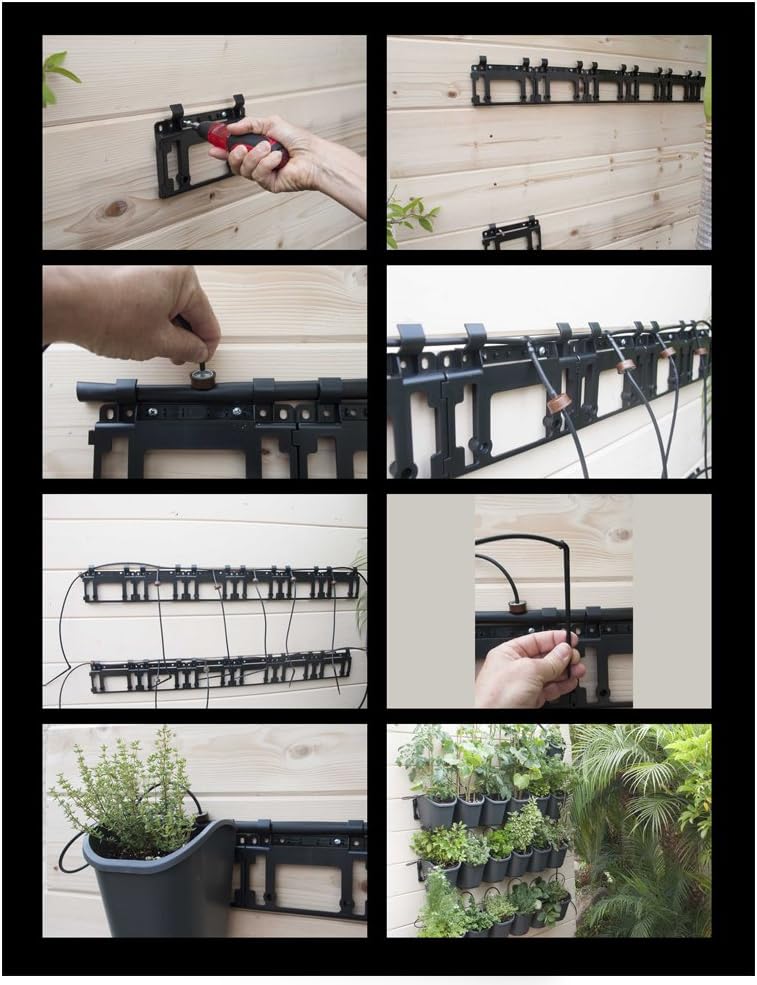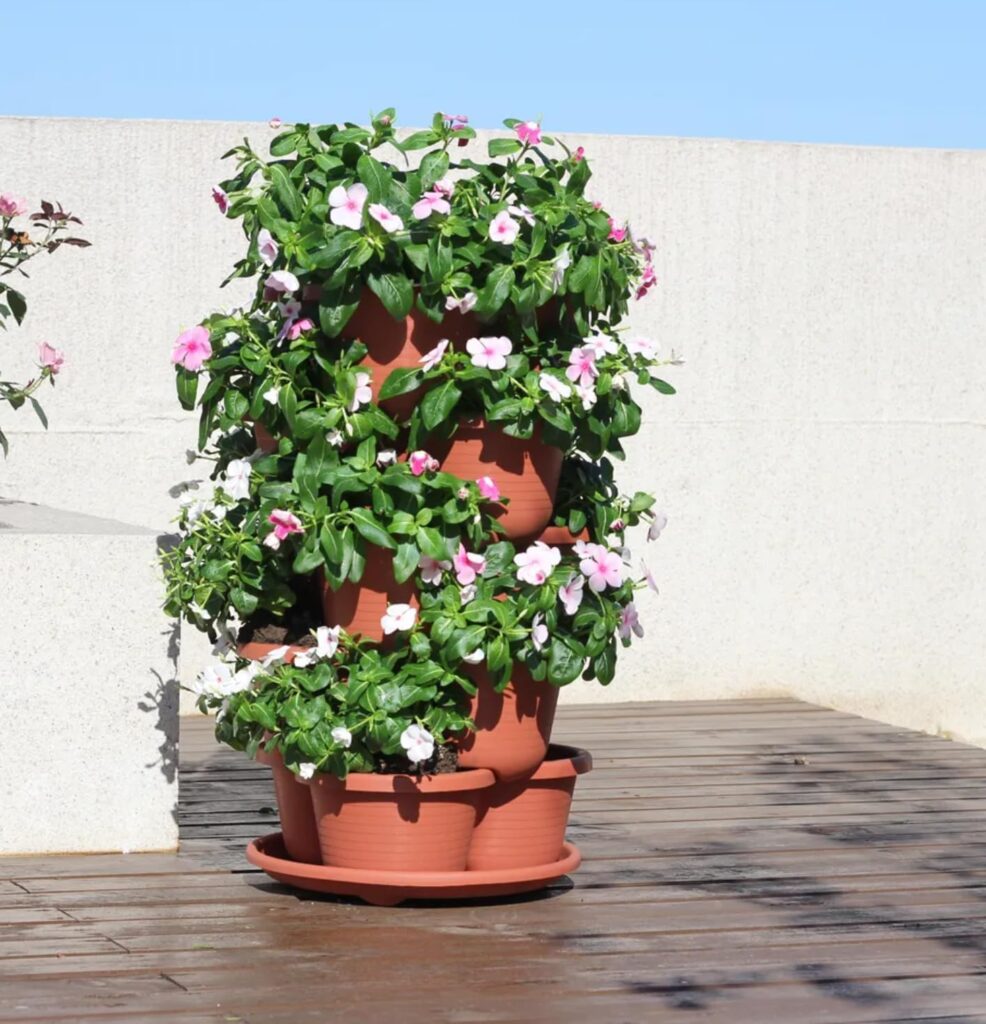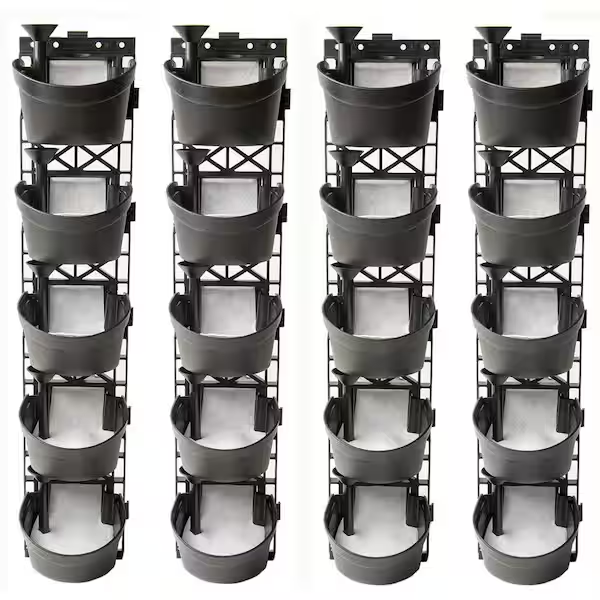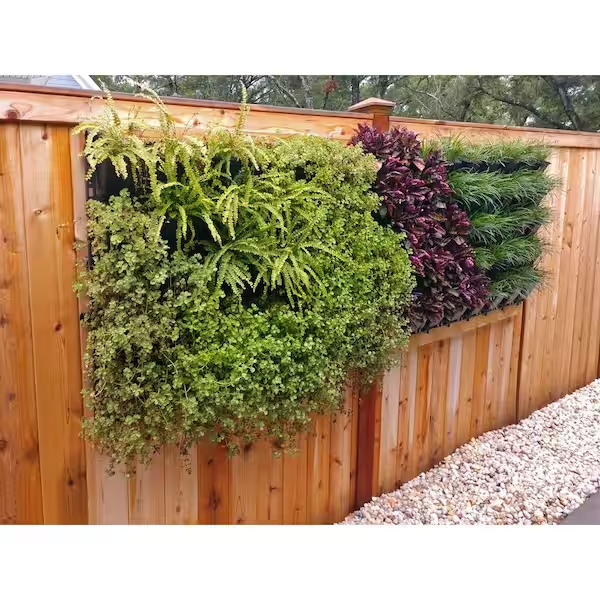What Are Vertical Garden Planters?
Have you ever wondered how to maximize your gardening space, especially when you have limited room? Vertical garden planters might be the answer you’re looking for! In this guide, we’ll explore different types of vertical planters, their pros and cons, and even some DIY tips for creating your own. Whether you’re interested in outdoor setups or enhancing your indoor green space, we’ve got you covered.
Vertical garden planters are structures designed to hold plants in a vertical arrangement. They are perfect for small spaces, allowing gardeners to grow more plants without taking up additional ground space. These planters can be used both indoors and outdoors, making them a versatile option for any gardener.
If you’re specifically interested in indoor vertical gardening, check out our detailed guide on the best plants for indoor vertical gardens, including ideas and tips. This article will help you choose the right plants to thrive in your vertical planters, ensuring a lush and vibrant indoor garden.
Types of Vertical Garden Planters
1. Modular Planters
Modular planters are pre-made systems that can be easily assembled and customized. They are ideal for those who want a quick and straightforward setup.


Pros:
- Easy to install
- Flexible and customizable
- Often come with self-watering features
Cons:
- Can be expensive
- Limited design options
Best For: Busy gardeners looking for a low-maintenance solution.
2. Stackable Planters
Stackable planters consist of multiple tiers that can be stacked on top of each other. They are perfect for growing herbs, flowers, and small vegetables.



Pros:
- Space-efficient
- Affordable
- Great for small plants
Cons:
- Limited root space
- May need frequent watering
Best For: Urban gardeners with limited space.
External Link: Explore stackable planters at Home Depot
3. Wall-Mounted Planters
Wall-mounted planters are attached to walls or fences, making them excellent for saving ground space and adding greenery to vertical surfaces.


Pros:
- Saves floor space
- Can be aesthetically pleasing
- Good for indoor and outdoor use
Cons:
- Requires sturdy walls
- Can be difficult to install
Best For: Indoor herb gardens or outdoor decorative plantings.
External Link: Find wall-mounted planters on Wayfair
DIY Tips for Vertical Garden Planters
If you’re feeling crafty, creating your own vertical garden planters can be a rewarding project. Here are some ideas to get you started:
1. Pallet Planter
Old wooden pallets can be repurposed into charming and functional vertical planters, perfect for any garden space.
- To start, you’ll need a sturdy wooden pallet. Clean the pallet thoroughly to remove any dirt or debris. Sand down any rough edges to prevent splinters.
- Once prepared, attach landscaping fabric to the back and sides of the pallet using a staple gun or strong adhesive. This fabric will help contain the soil while allowing water to drain.
- Next, fill the pallet with high-quality potting soil, making sure it’s evenly distributed in each section.
- Now, it’s time to plant your favorite herbs or flowers. Choose plants that thrive in vertical environments, such as thyme, basil, or petunias. Gently place each plant into the soil-filled slots, ensuring they are securely positioned.
- Water the plants thoroughly and place the pallet in a location that receives adequate sunlight. With proper care, your pallet planter will soon be a vibrant, green addition to your garden.
2. PVC Pipe Planter
PVC pipes can be transformed into innovative and space-efficient vertical planters.
- Start by selecting PVC pipes of various lengths, depending on your desired arrangement. Use a saw to cut the pipes, then sand the edges to smooth out any rough spots.
- Drill holes into the pipes, spaced evenly for planting. These holes will serve as pockets for your plants.
- To mount the pipes vertically, attach them to a wall or fence using brackets or clamps. Ensure they are securely fastened to handle the weight of the soil and plants.
- Fill the pipes with a well-draining potting mix, suitable for the types of plants you wish to grow. Small herbs like parsley, cilantro, or succulents such as hens and chicks work well in this setup.
- Carefully plant your chosen greenery into the drilled holes, making sure they are firmly in place.
- Water the plants lightly, and monitor the moisture levels regularly. Your PVC pipe planter will create a striking vertical garden that saves space and adds a modern touch to your outdoor area.
3. Hanging Bottles Planter
Recycling plastic bottles into hanging planters is an eco-friendly way to create a unique vertical garden.
- Start by collecting several plastic bottles. Cut each bottle in half, creating two planting containers from each bottle.
- Poke a few drainage holes in the bottom of each half to prevent waterlogging.
- Fill the bottles with a lightweight potting soil mix, ideal for small plants. Using twine or wire, create a hanging system by tying or wrapping around the necks of the bottles.
- Securely hang the bottles from hooks, a trellis, or a sturdy horizontal rod. This method allows you to easily adjust the height and arrangement of your planters.
- Choose small plants that thrive in limited soil space, such as mint, lettuce, or trailing plants like ivy. Additionally, consider herbs and compact flowers for a diverse and vibrant vertical garden. Plant your selections into the soil-filled bottles, ensuring they are well-supported.
- Water the plants as needed, taking care not to over-saturate the soil.
This hanging bottles planter not only recycles materials but also creates a visually appealing vertical garden. Consequently, it can be placed on a balcony, patio, or any small outdoor space.
Conclusion
Vertical garden planters offer a creative and efficient way to grow plants, especially in small spaces. Moreover, whether you choose modular, stackable, or wall-mounted planters, or decide to create your own DIY version, these systems can significantly transform your gardening experience. Additionally, don’t forget to consider adding grow lights for indoor setups to ensure your plants thrive. Finally, by integrating these methods, you can maximize your gardening potential and enjoy a lush, green environment.
For more gardening tips and ideas, check out our other articles on Diverse Feed.



